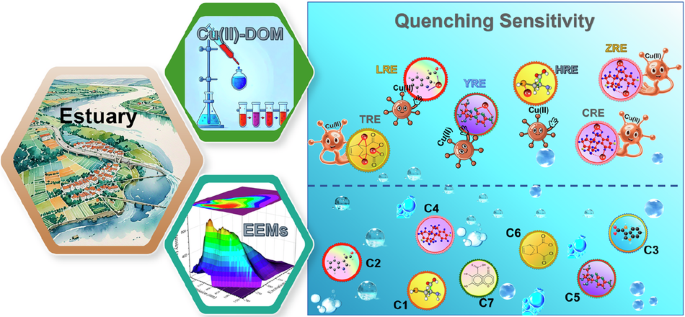Report on the U.S. Environmental Protection Agency’s Residential Lead Directive
Introduction: Advancing Sustainable Development Goals through Enhanced Environmental Policy
On October 16th, the United States Environmental Protection Agency (EPA) issued a directive titled “Residential Lead Directive for CERCLA Sites and RCRA Hazardous Waste Cleanup Program Facilities.” This policy initiative establishes a new framework for addressing residential lead contamination, directly contributing to the achievement of several United Nations Sustainable Development Goals (SDGs). By prioritizing the reduction of children’s exposure to lead, the directive strongly supports SDG 3 (Good Health and Well-being) and SDG 11 (Sustainable Cities and Communities). The directive, transmitted by the Assistant Administrator for the Office of Land and Emergency Management, supersedes the January 2024 guidance, aiming to provide clarity and expedite cleanup efforts at contaminated sites.
Key Provisions and Alignment with SDG Targets
The directive establishes clear, science-based standards to protect public health, with a particular focus on children, a vulnerable population group central to the ethos of the SDGs. These measures are fundamental to achieving SDG Target 3.9, which aims to substantially reduce illnesses and deaths from hazardous chemicals and soil pollution.
- Regional Screening Level: A level of 200 parts per million (ppm) for lead in residential soil is established to identify areas requiring further investigation.
- Regional Removal Management Level: A level of 600 ppm for lead in residential soil is set as a threshold for initiating cleanup actions.
- Health-Based Remediation Goal: A target children’s blood lead level of 5 micrograms per deciliter will be used to determine preliminary remediation goals, directly linking cleanup actions to tangible health outcomes.
Implementation Strategy: Fostering Partnerships and Strong Institutions
The EPA outlines a comprehensive implementation strategy that enhances institutional effectiveness and collaboration, reflecting the principles of SDG 16 (Peace, Justice, and Strong Institutions) and SDG 17 (Partnerships for the Goals). This approach ensures that land remediation efforts are consistent, efficient, and community-focused, contributing to the creation of safe and resilient settlements as envisioned in SDG 11.
- Process Improvements for Institutional Strengthening:
- Development of tools to support nationally consistent cleanup decisions, promoting transparent and accountable governance (SDG 16).
- Establishment of a National Center of Excellence for Residential Lead Cleanups to share best practices and build capacity.
- Utilization of specialized contracting mechanisms to leverage and accelerate removal and remedial actions.
- Commitment to Partnerships and Inclusivity:
- Emphasis on early engagement with state and local partners, fostering the multi-stakeholder collaborations essential for SDG 17.
- Continued use of site-specific factors, including community input, ensuring that cleanup solutions are context-appropriate and inclusive (SDG 11).
- Consideration of soil lead background levels and specific exposure pathways to tailor interventions effectively.
Scope and Contribution to Responsible Resource Management
The directive’s mandates apply to all sites with residential lead contamination subject to the Comprehensive Environmental Response, Compensation, and Liability Act (CERCLA) and the Resource Conservation and Recovery Act (RCRA) Hazardous Waste Cleanup Program. This broad scope, which includes federal facilities, underscores a national commitment to addressing the legacy of contamination from past industrial activities. By ensuring the environmentally sound management of hazardous waste and contaminated land, this policy directly supports SDG 12 (Responsible Consumption and Production), particularly Target 12.4, which focuses on managing chemicals and wastes throughout their life cycle to minimize adverse impacts on human health and the environment.
Analysis of the Article in Relation to Sustainable Development Goals
1. Which SDGs are addressed or connected to the issues highlighted in the article?
The article on the EPA’s directive for residential lead cleanup connects to several Sustainable Development Goals (SDGs) by addressing environmental health, pollution, sustainable communities, and institutional effectiveness.
- SDG 3: Good Health and Well-being: The primary focus of the directive is to protect human health, specifically by reducing “children’s exposure to lead,” a hazardous substance with severe health impacts.
- SDG 11: Sustainable Cities and Communities: The initiative aims to make residential areas safer by managing and cleaning up hazardous contamination in soil, which is fundamental to creating safe and sustainable human settlements.
- SDG 12: Responsible Consumption and Production: The directive addresses the management of hazardous waste at RCRA (Resource Conservation and Recovery Act) facilities, directly relating to the environmentally sound management of chemicals and wastes.
- SDG 16: Peace, Justice and Strong Institutions: The EPA, as a governmental institution, is creating a clear and effective framework (“a new vision,” “nationally consistent cleanup decisions”) to address a public safety issue, thereby strengthening institutional capacity and transparency.
2. What specific targets under those SDGs can be identified based on the article’s content?
Based on the actions described in the EPA directive, the following specific SDG targets can be identified:
- Target 3.9: By 2030, substantially reduce the number of deaths and illnesses from hazardous chemicals and air, water and soil pollution and contamination. The article directly supports this target by establishing a framework to clean up lead, a hazardous chemical, from residential soil to prevent lead poisoning and related illnesses, especially in children.
- Target 11.6: By 2030, reduce the adverse per capita environmental impact of cities, including by paying special attention to air quality and municipal and other waste management. The directive’s focus on cleaning up “residential lead contamination” at CERCLA and RCRA sites is a direct action to reduce the adverse environmental impact of hazardous waste on communities.
- Target 12.4: By 2020, achieve the environmentally sound management of chemicals and all wastes throughout their life cycle… and significantly reduce their release to air, water and soil in order to minimize their adverse impacts on human health and the environment. The directive provides updated guidance for managing and remediating lead contamination at RCRA “Hazardous Waste Cleanup Program Facilities,” contributing to the sound management of this hazardous waste.
- Target 16.6: Develop effective, accountable and transparent institutions at all levels. The EPA’s issuance of the directive is an action to create a more effective and consistent process, replacing previous guidance that “hampered cleanup efforts by creating uncertainty.” The establishment of a “National Center of Excellence for Residential Lead Cleanups” further aims to build institutional effectiveness.
3. Are there any indicators mentioned or implied in the article that can be used to measure progress towards the identified targets?
Yes, the article explicitly mentions several quantitative and qualitative indicators that can be used to measure progress.
- For Target 3.9 (Health): The article provides a specific health-based goal that can be used as an indicator:
- A “target children’s blood lead level of 5 micrograms per deciliter” is used to determine remediation goals. Monitoring the average blood lead levels in children in affected communities would be a direct measure of progress.
- For Targets 11.6 (Communities) and 12.4 (Waste Management): The directive establishes clear, measurable thresholds for soil contamination, which serve as direct indicators for cleanup efforts:
- “Regional screening level of 200 parts per million for lead in residential soil.”
- “Regional removal management level of 600 parts per million for lead in residential soil.”
- Progress can be measured by the number of sites screened, the area of residential land remediated to meet these levels, and the reduction in soil lead concentrations.
- For Target 16.6 (Institutions): The article implies qualitative indicators related to institutional improvement:
- The implementation of “tools to support more nationally consistent cleanup decisions” can be assessed.
- The establishment and operational success of the “National Center of Excellence for Residential Lead Cleanups” serves as an indicator of improved institutional capacity and knowledge sharing.
4. SDGs, Targets and Indicators Table
| SDGs | Targets | Indicators |
|---|---|---|
| SDG 3: Good Health and Well-being | 3.9: Substantially reduce illnesses from soil pollution and contamination. | Target children’s blood lead level of 5 micrograms per deciliter. |
| SDG 11: Sustainable Cities and Communities | 11.6: Reduce the adverse per capita environmental impact of cities through waste management. | Regional screening level of 200 ppm for lead in residential soil. |
| SDG 12: Responsible Consumption and Production | 12.4: Achieve environmentally sound management of chemicals and all wastes. | Regional removal management level of 600 ppm for lead in residential soil. |
| SDG 16: Peace, Justice and Strong Institutions | 16.6: Develop effective, accountable and transparent institutions. | Establishment of a National Center of Excellence for Residential Lead Cleanups; implementation of tools for nationally consistent decisions. |
Source: jdsupra.com






